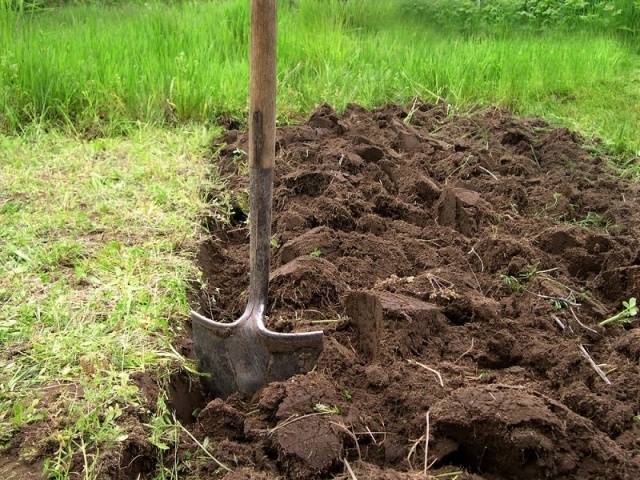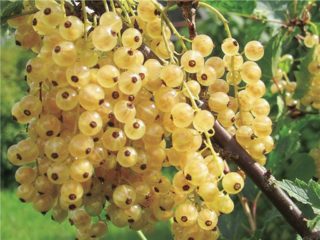Currants are an invaluable, generous gift of nature to people, a rich source of vitamins and microelements that are practically not destroyed during heat treatment. Therefore, currant berries are valuable both fresh and as preparations.
The currant bush is unpretentious and produces a harvest regardless of the vagaries of nature. Each bush lives about 15 years. Over time, it becomes necessary to update old berry gardens or increase the planting area.
Currants are a berry crop that reproduces well, produces a lot of planting material, and, what is especially important, almost all of it takes root. Therefore, you should not hope for luck when buying planting material on the side. It is much easier to get it from your own bushes, especially if you are satisfied with the yield and taste of the berries. The easiest way to propagate is to plant currant cuttings in the fall.
Preparation of planting material (+ video)
An important stage is the preparation of planting material. Depending on its quality, you will receive currant bushes with high yield. You should carefully consider the choice of the mother bush from which you will take cuttings.
The currant bush must be healthy and strong; the cuttings will be weak at first, so you should not expose them to additional risk. Plants from cuttings will completely replicate the qualities of the mother plants.
In the fall, lignified cuttings are harvested. They are taken from annual shoots that have developed from the root zone. Cut off the entire shoot above the soil level. In spring or autumn, you can combine two processes: pruning the currant bush and preparing planting material.
Two-year-old shoots are not suitable for cuttings, just as the annual shoots that formed on them are also unsuitable. Currant cuttings, prepared from such shoots are too weak, they have few nutrients, as a result of which they take root poorly and are more often infected with diseases.
There is no point in making the blanks shorter. This will mean that the short cutting has too few nutrients for subsequent rooting. Workpieces that are too short may not take root. Let there be few cuttings, but they will be guaranteed to be completely rooted.
Before you start preparing planting material, inspect the tool. The pruning shears must be well sharpened and disinfected so as not to introduce dangerous viral or fungal diseases to the cut site.
For disinfection, use a dark pink solution of potassium permanganate, ferrous sulfate, alcohol or kerosene. The pruning shears are dipped into the liquid and wiped dry with a rag. You can also use the special drug “Farmayod” - an effective means for disinfecting garden tools.
A well-sharpened tool should make an even cut and not wet or crush the shoot. The cut is made above the kidney, retreating approximately 1 cm at an acute angle. The upper part of the cutting is cut at a right angle.For cuttings, take the middle part of the shoot or its base; the top of the shoot is not suitable for preparations. The suitability of the shoot is checked by bending it. It should be flexible and break only when bent sharply.
Another sign of high quality currant cuttings is their color when cut; it should be light green.
A round bud is a sign of tick infestation. We require completely healthy planting material from currants.
To ensure that there is moisture in the shoot, choose the right time to cut the cuttings. This can be early in the morning if the weather is hot, but a cloudy day in late September or early October is best. At this time, the kidneys go into a state of rest and fall asleep.
The degree of rooting of cuttings increases. As a rule, the time is chosen 2 weeks before the onset of the first frost. Deadlines may vary in regions. In the southern regions they shift to the beginning - mid-October, in the Urals and Siberia to mid-September. Focus on the weather conditions of your area.
After the currant cuttings have been cut, they are tied into bunches, wrapped in a thick damp cloth, and then in a piece of polyethylene, if they are intended for storage. Before planting, it is recommended to immerse the lower part in a solution of a root formation stimulator for a day. The following drugs are used: “Zircon”, “Heteroauxin”, “Kornerost”, “Kornevin” and others.
Watch a detailed video on how to prepare and plant cuttings:
Planting cuttings
Planting currants from cuttings can also be done before winter.For black currants, choose a slightly lower area of the site, but well lit and protected from the winds, for example, along a fence. The plant loves well-moistened soil, but does not tolerate stagnation of moisture in plantings. Acidic soils are also not suitable for black currants. Take care in advance to deoxidize the soil with lime, ash, and chalk.
For planting black currants, heavy and medium-heavy loams are preferable; for red and white currants, light sandy loams and loams are preferable.
Consider what plants were growing before planting the cuttings in the fall. It is better to plant currants after their predecessors: cereals and annual herbs. The worst thing for cuttings will be after raspberries and gooseberries. Black currants and gooseberries have the same pests and diseases, and raspberries are capable of producing shoots for a long time, even if they are uprooted, while taking away nutrients from young plants and clogging the plantings.
Next, you should dig up the bed to a depth of 30 cm. This is an important point, since in the process of digging up the soil, insect pests, their larvae and eggs, which have prepared for the winter, will end up on the surface and die from the coming frosts. They will no longer be able to hide again, as they are in a sleeping state.
Next, the area for planting currant cuttings should be thoroughly cleaned of weeds and their roots, leveled, and fertilized with humus, compost or peat. Or add fertilizer from mineral fertilizers: double superphosphate - 50 g and potassium sulfate - 20 g per 1 sq. m. m landings. It is better to prepare the soil 2-3 weeks before the planned planting.
Then shallow trenches are made at a distance of approximately 40 cm from each other.This distance will allow you to conveniently care for currant cuttings or then dig them up for planting in a permanent place of growth. Currant cuttings are planted in trenches at an angle of 45-60° at a distance of 15-20 cm from each other, to a depth of 6 cm, so that the lower bud is at soil level. In total, 2-3 buds remain above the soil surface. The soil around each currant cutting is carefully crushed so that no air voids form. Well watered.
Then the ground under the plantings is covered with mulch. You can use peat, straw, humus, 5-10 cm thick. Or use non-woven black agrofibre, on which a hole is made with scissors above each currant cutting. Mulch or agrofibre helps retain moisture, which in turn promotes rooting. If the weather is dry and warm for a long time, then the planted currant cuttings should be watered.
With the onset of spring warmth, at a temperature of +10+15°, autumn seedlings begin to grow, grow roots and green mass. By mid-May - late May, their leaves begin to bloom.
Watch a video on how to plant blackcurrant cuttings:
Currant cuttings harvested in the fall can be planted in prepared containers filled with fertile soil based on garden soil, with the addition of humus, peat, compost and river sand in equal parts. Flower pots, boxes, cut plastic bottles, as well as bags of juices and dairy products are suitable for planting containers. Be sure to make a drainage hole at the bottom of the container at hand.
Currant cuttings are planted in a turf mixture, leaving 2-3 buds on the surface, the soil is pressed with hands around the cuttings, and watered well.The containers can be placed on the windowsill. Regular care will consist of watering the currant cuttings.
Thus, it is possible to successfully grow currants from cuttings indoors before the start of the planting season. In spring, when daytime temperatures are at least +13+15°C, seedlings can be planted in a permanent place of growth. Although it is better to let them grow in a separate area until the fall, giving them the opportunity to gain strength in order to easily endure the coming winter.
The good thing about this method is that all autumn cuttings, without exception, take root, unlike planting in winter. In the middle zone, the period of autumn before the onset of frost is too short; many currant cuttings do not have time to adapt to new living conditions and die as a result of the onset of cold weather.
If the cuttings turn out to be unclaimed in the fall, then they can be stored dormant until spring in the refrigerator, and with the onset of spring warmth they can be planted in open ground.
Conclusion
Delicious, aromatic berries grown on your own plot will bring much more health benefits than purchased ones. In order to have enough currants, you should increase its planting. There are several ways to propagate black currants in autumn or spring. The most accessible and reliable method is autumn cuttings. Thus, you can quickly increase the number of productive and rare varieties. How to plant currants by cuttings, the issue should be given close attention. However, the result will please you. Next year, young currant bushes will grow, from which you can get your first harvest. Planting currants from cuttings is beneficial from an economic point of view, since it does not require additional costs.



















